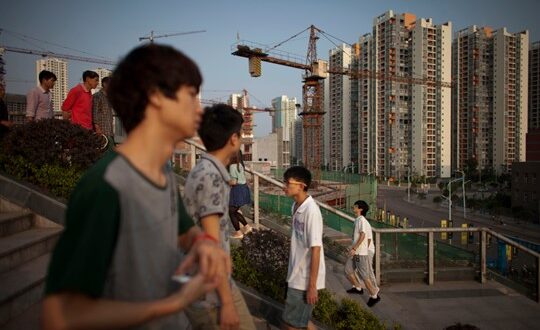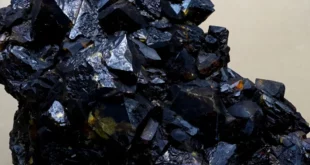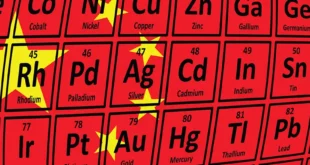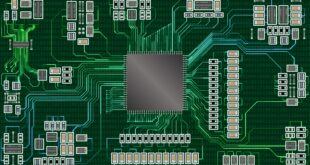In July 1971, one month after the publication of the Pentagon Papers and a year before the Watergate break-in that would eventually cause his downfall, Richard Nixon gave one of the most interesting, and in retrospect, important, speeches of his political career.
Still relatively unblemished by scandal, Nixon was cruising toward what would become a gigantic reelection win. He had his eyes fixed firmly on the future and on his long-standing penchant, if not obsession, with international affairs.
In a speech to Midwestern media executives that even now remains underappreciated, Nixon said that because of the all-consuming effect of the Vietnam War on American politics, the United States risked losing sight of momentous changes that were reshaping the world.
After a quarter-century in which the United States had enjoyed towering preeminence since World War II, the world had begun to rebalance. The United States, he intimated, was in for a period of relative decline, although to speak directly on a topic like this would be—and remains—a death sentence in American politics.
“Instead of just America being number one in the world from an economic standpoint, the preeminent world power, and instead of there being just two superpowers, when we think in economic terms and economic potentialities, there are five great power centers in the world today,” Nixon said, listing the others as Western Europe, Japan and China, along with the U.S. and USSR.
It was China, though, that most preoccupied Nixon at the time, a fact that he seems to have carefully buried well into his remarks and approached indirectly. Twenty years earlier, Nixon pointed out, Japan had produced a mere 5 million tons of steel, but its production had since risen to 100 million and would soon surpass that of the U.S. In 1971, Japan’s economic output dwarfed that of its neighbor, China, then still under the radical socialism of Mao Zedong. “But that should not mislead us, and it gives us, and should give none of the potential competitors in world markets of Mainland China, any sense of satisfaction that it will always be that way,” Nixon cautioned.
Describing the Chinese people as “creative” and “productive,” he matter-of-factly pointed out that “800 million Chinese are going to be, inevitably, an enormous economic power, with all that that means in terms of what they could be in other areas if they move in that direction.”
“That,” he concluded, “is the reason why I felt it was essential that this Administration take the first steps toward ending the isolation of Mainland China from the world community.”
While Nixon was clearly working here to prepare public opinion for what we now know would follow, what he did not tell the assembled editors was that three days later, his national security adviser, Henry Kissinger, would be visiting Beijing in a secret trip that would in turn set up a visit by Nixon himself months later, one that the American president subsequently boasted “changed the world.”
Nixon’s long view of how the workings of still seemingly subterranean changes can rearrange the world in a matter of decades is worth recalling, because the United States now finds itself in an unfamiliar moment of taking stock, looking nervously in the rearview mirror and wondering if or when China will surpass it, and what that portends.
China’s investments in improving what economists call human capital have been immense, ranging from health care to huge improvements in basic schooling.I wrote in a recent column about how frequently President Joe Biden and other prominent American politicians speak of the urgent need to do this or that in order to compete with China. Almost daily now, the public is told that big infrastructure is the key to staving off the so-called China challenge. The passing of enormous bills to pay for it is urgent not only for the new trains and tunnels and broadband they will procure, but also to prove the continuing relevance and viability of democracy itself.
Some may feel that rhetoric like this is overblown, but if American and Western self-doubt have reached such a level, it seems more worthwhile than ever to understand how Beijing engineered its sharp rise.
The focus on China’s impressive rollout of high-speed rail and urban metros and new airports by the dozen, alongside much other physical infrastructure, tells only part of the story. As impressive as this buildout has been, it is useful to think of such things as the visible portion of an iceberg. The most important investments China has made during this period of prolonged takeoff are arguably less tangible and involve the most embattled portion of Biden’s own revival program: so-called human infrastructure.
Although less visible, China’s investments in improving what economists call human capital have been immense, ranging from health care to huge improvements in basic schooling. Perhaps the most telling data, however, comes from higher education, for which Beijing launched a crash expansion push in 1998.
Back then, a little more than two decades ago, roughly 12 million Chinese received what is known as tertiary education. By 2019, that number had grown to 40 million and was still increasing fast, with China opening the equivalent of a new university a week. Historically, Westerners have always heavily dominated when it comes to the number of university graduates in the world, but several years ago already, China quietly overtook the U.S. and Europe combined for most graduates among 25- to 34-year-olds, and it is on pace to continue increasing its number of graduates dramatically throughout this decade.
In the early phases of this national transformation, as with traditional infrastructure, much of the drama could be written off as reflecting a catch-up effect, meaning that an economically backward China was creating both physical and human infrastructure where, because of poverty, none before had existed. Under such conditions, percentage changes in growth look especially impressive. But now, well into this national push, China is clearly sustaining its early momentum.
As I argued in “Everything Under the Heavens: How the Past Shapes China’s Push for Global Power,” facing an unprecedented crisis of aging and demographic shrinkage, China’s leaders have concluded that the country’s best chance at lasting prosperity comes from dramatic and sustained investments in the existing workforce as well as that of the future. This is needed in order to generate enough new wealth and productivity to overcome the coming crunch of soaring social welfare costs and fewer people of working age. It is also needed to “win” the so-called Fourth Industrial Revolution, which involves frontier technologies like artificial intelligence and quantum computing. This explains much of the apparent haste and assertiveness commonly attributed to the country’s leader, Xi Jinping, who recently predicted a doubling of the Chinese economy by 2035, just when the aging crisis will start to hit hard.
For Americans, the question is, How does one explain the apparent indifference—if not outright hostility—to improving human capital that exists in domestic politics, especially in the Republican Party that Nixon belonged to, even at a time of increasingly vocal alarm at the implications of a rising China? For generations, immigrants have been the not-so-secret sauce of America’s prowess at innovation and productivity. But with hostility to immigration rising in many quarters, too, a failure to invest much more heavily in improving the country’s human capital seems like an obvious recipe for relative decline.
Republicans today often object to Biden’s focus on “equity” for Blacks and members of other minority groups as a sop to crucial Democratic constituencies. In fact, bringing these populations fully into line with whites in terms of education, income and eventually wealth will be key to meeting America’s competitive challenge. But as with Nixon and the topic of relative decline, the current president has not yet found the voice to say so directly.
 Eurasia Press & News
Eurasia Press & News




